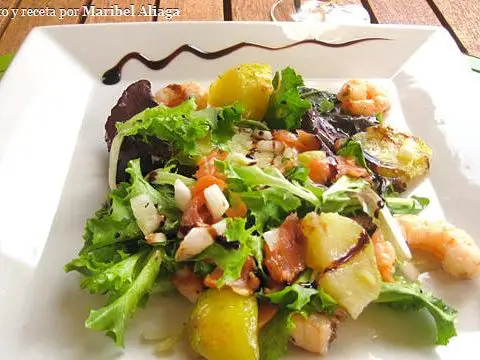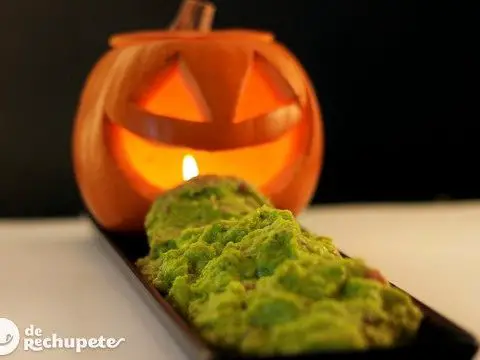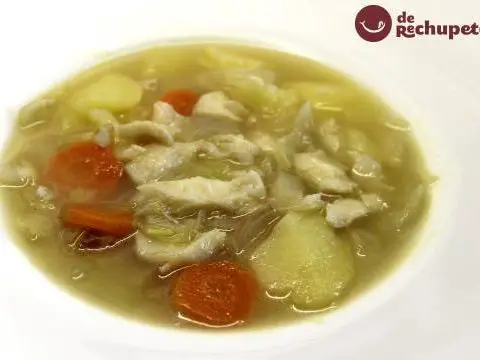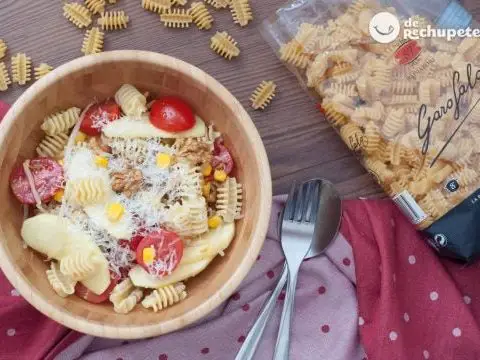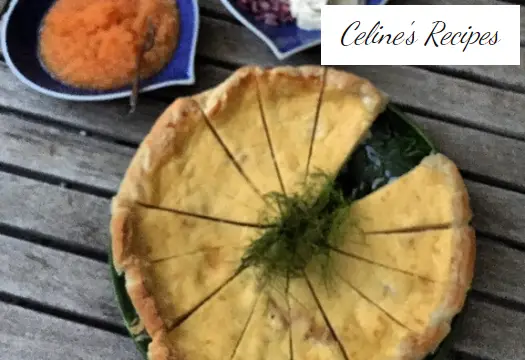
Info.
- Easy
- 60 minutes
- For 8 people
- € 1 / person
Not long ago, the IE boys played a digital dinner and, like every year around this time, we met at Niklas’ house, an entrepreneur like a pine tree that never ceases to amaze us with new ideas on every date. At dinner we got together a few friends who are growing little by little, each one contributing something to the digital world. If we get to start a company among all, my goodness, the one that can be rolled. Emma Kristina Zethelius was one of the assistants, she is Swedish, she loves cooking and she dared to prepare one of the most famous cakes in Sweden, her Västerbottenostpajel . A delicious, creamy and tasty Västerbotten cheesecake perfect for any occasion, although it is more normal to find it on Swedish tables on a holiday.
It can be served hot, warm or cold and is usually accompanied by sour cream or crème fraîche, with very minced red onion, pickles, a touch of mustard and its Swedish caviar (Kalix roe). This caviar so famous in Sweden here is totally unknown, if it were not for Emma I would still not try it (I assure you), because it is quite expensive (in the price per person I do not include the cost of this ingredient). It is a perfect accompaniment to this cheese cake, but you can always substitute roe that we find in Spain, trout roe would be perfect. Swedish Kalix caviar comes from the rivers of Lapland, in the Botnia Bay archipelago. These roe of the corregono fish acquire a unique flavor thanks to the influx of fresh water from the rivers into the sea. Its orange color makes it a unique dish, which is why the EU has granted the Kalix Caviar Protected Geographical Indication, and it is tasted at royal banquets and at Nobel Prize banquets.
In Sweden, Västerbotten cheese is considered a must-have for the end of summer the crayfish festival, and is also eaten along with the traditional pickled herring dish, all year round. And of course it adds all its flavor to the Västerbotten cake. The Burträsk people claim that Västerbotten cheese was invented there in the 1870s by Eleonora Lindström. According to legend, she was left alone to shake the traditional cheese curd, but was interrupted and gave way to this type of cheese.
This recipe is made for about 8 servings, if you are more diners you must change the amount of ingredients. In some cases, this may result in the need to adjust the cooking time and of course you can change the ingredients such as cheese (difficult to find in Spain) for a cheese with strength and flavor, I would change it for an Idiazabal for example. It is not a very common recipe but as I always tell you, it is great to be able to know the gastronomy of other countries, of Sweden for example you can find in the blog their salmon burger or Laxwallenbergare and of course the meatballs. Thank you very much Emma for showing the best of your country.
Preparation of the Swedish cheesecake
- We place the dough in a low mold without removing the paper that comes with it in the package. It is sulfurized paper and it will avoid us having to spread the mold with butter so that the dough does not stick. Press lightly around the edge to shape it.
- With a fork we prick the entire base well to prevent the dough from growing excessively during baking and put raw legumes on top, in this case with chickpeas (to avoid bubbles forming below).
- With the oven previously heated to 180º C, we half-cook the dough for approximately 10-15 minutes, until it is slightly toasted. This pre-cooking is very important to prevent the Swedish cake from breaking due to the weight of the filling in the final mold release. This will be perfect for you.
- Grate the cheese and reserve.
- In a bowl, add the crème freîche or whipping cream, whole milk and previously beaten eggs and mix well. Add a pinch of ground black pepper and salt, add the cheese and beat everything until it is well integrated.
- We pour the mixture over the pre-baked dough and put it in the oven already hot at 200º C for 20 or 25 minutes, until we see that the egg is curdled. We check that the quiche is baked by pricking it with a toothpick. If it comes out dry it is already done.
We can take it both cold and hot, but I think that just out of the oven it is in its fullness. I leave you with a cake with many names Västerbotten, Västerbotten, Westerbottensostpaj … but it is yummy.
I encourage you to visit more recipes for tapas, snacks and pinchos perfect for an unforgettable evening with yours. Perfect for a light dinner, a party or, yes, a delicious way to share food with friends and the people you love.
